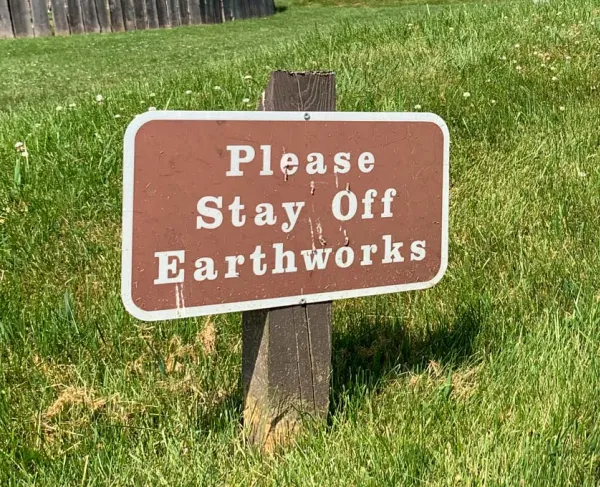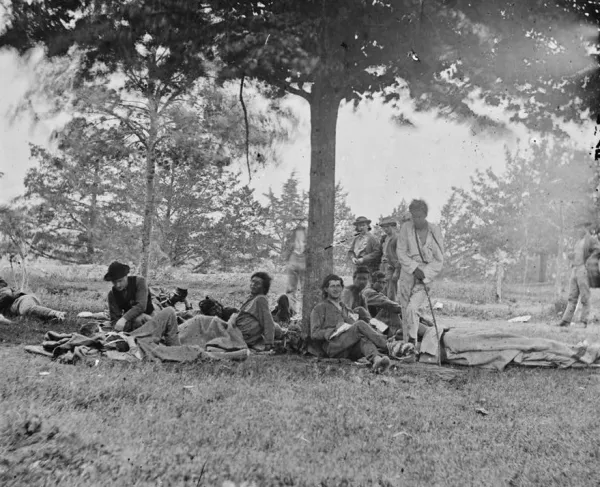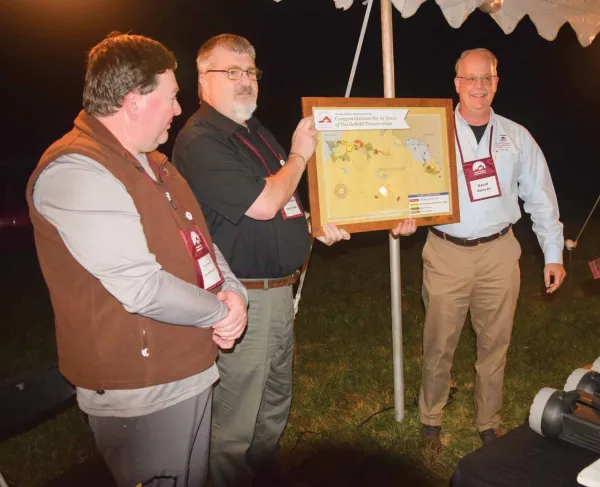Lt. John Patterson and the Medal of Honor
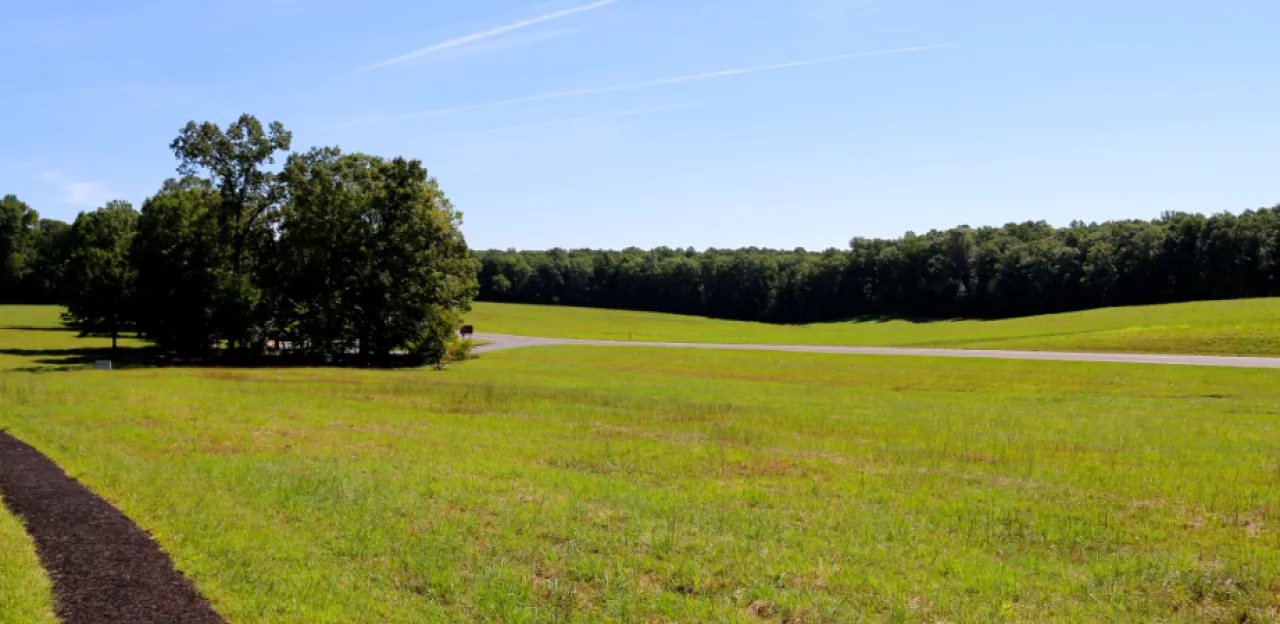
BY JOSEF W. ROKUS
NOTE: In 2010 the American Battlefield Trust preserved 49 acres of the Wilderness battlefield. This land in Saunders Field was near where Lt. Patterson and the 11th U.S. Infantry were located on May 5, 1864, the day that John Patterson earned the Medal of Honor. This land has since been transferred to the Fredericksburg and Spotsylvania National Military Park.
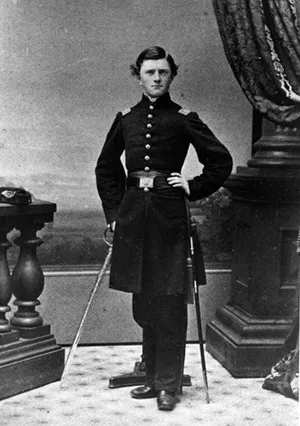
Lieutenant Patterson at the Battle of the Wilderness
Lieutenant John H. Patterson was assigned to the 11th U.S. Infantry Regiment, which at the time was commanded by Captain Francis Cooley. The regiment was part of the 1st Brigade (Brig. Gen. Romeyn B. Ayres), which reported to the 1st Division (Brig. Gen. Charles Griffin) which, in turn, was one of the divisions in the 5th Corps, commanded by Maj. Gen. Gouverneur K. Warren.
On the morning of May 5, Union pickets observed a force of Confederates moving up the Orange Turnpike (Ewell’s Corps), and they hastily constructed earthworks along the western edge of Saunders Field, a clearing intersected by the Turnpike. Grant and Meade directed Warren to attack immediately, but Warren hesitated because the Confederate formation overlapped his right flank and would enfilade him if he advanced. He beseeched Meade to postpone the attack until Maj. Gen. John Sedgwick with his 6th Corps could arrive on the battlefield. By 1:00 PM, however, Meade had become so exasperated with Warren’s delay that he ordered him to proceed without Sedgwick.
Griffin’s men, including Ayres’ Brigade and the 11th U.S. Infantry Regiment, strode across Saunders Field into intense Confederate firepower. Ayres’ Brigade, on the far right of the line on the north side of the Orange Turnpike, was blistered by Southerners shooting from behind earthworks not only to their front but also on their right. Many of Ayres’ men were forced to fall back across the field, seeking refuge in a gully. Lieut. Col. William H. Powell, 11th U.S. Infantry Regiment, later wrote, “The tremendous roll of firing excluded all other sounds. Here and there a man toppled over and disappeared, or springing to his feet, pressed his hands to the wounded part and ran to the rear. Men’s faces were sweaty black from biting cartridges, and a sort of grim ferocity seemed to be creeping into the actions and appearance of everyone within the limited range of vision. The tops of the bushes were being cut away by the leaden missiles that tore through them, and occasional glimpses of gray, phantom-like forms crouching under the bank of cloud were obtained.”
At one point during the heavy fighting, Warren thrust an artillery section into Saunders Field, which began lobbing shells into friend and foe. When the Federals came tumbling back, Rebels swarmed into the abandoned cornfield and captured the guns. Warren’s riflemen prevented the Southerners from hauling off the pieces – at least until the night of May 6 - 7 when, under the cover of darkness, the Confederates dragged the artillery pieces into their lines.
Around 3:00 PM, Sedgwick’s lead elements reached Saunders Field. By then, much of the fighting there had sputtered to a close, although Sedgwick and Ewell engaged in an hour of confused and bloody combat before both sides disengaged and began erecting earthworks. Although some combat continued later that afternoon and evening, at the end of the day neither side could claim victory at Saunders Field.

In the midst of the fighting, brush fires erupted on the battlefield. Wounded men from both armies watched in horror as their comrades were consumed in flames. As best they could and at the risk of becoming casualties themselves, soldiers from both sides tried to carry the wounded out of the fast-spreading fires to safety, but some could not be reached, and they were burned alive. “Suddenly, to the horror of the living,” wrote a member of the 7th Indiana Regiment who was lying along the Turnpike, wounded, “fire was seen creeping over the ground, fed by dead leaves which were thick. All who could move tried to get beyond the Pike, which the fire could not cross. Some were overtaken by the flames when they had crawled but a few feet, and some when they had almost reached the road. The ground, which had been strewn with dead and wounded, was in a few hours blackened, with no distinguishable figure upon it.”
Another historian has described the fires at Saunders Field as follows: “Ignited by powder sparks, fed by dry underbrush and stoked by the wind, flash fires flared up across the battle lines. The flames exploded many of the cartridge boxes strapped to the bellies of the fallen, blowing bloody holes in the helpless, screaming victims. A New York Zouave viewed the horror and recalled, ‘The almost cheerful “Pop! Pop!” of cartridges gave no hint of the almost dreadful horror their noise bespoke…The bodies of the dead were blackened and burned beyond all possibility of recognition.’”
Finally, today’s National Park Service historical marker at the Wilderness Battlefield Exhibit Shelter at Saunders Field states, “Brush fires added to the horror of the Wilderness fighting. Ignited by muzzle blasts and fueled by dead leaves and twigs, fires swept through the dry woods, obscuring soldiers’ vision and filling their lungs with suffocating smoke. ‘Two thousand men, inspired with the desperation of demons’ wrote one soldier, ‘were fighting in a wilderness of fire.’ Hundreds of wounded men, unable to escape the devouring flames, suffered an agonizing death. Others, unwilling to endure such a fate, chose instead to take their own lives. Union artilleryman Frank Wilkerson saw a man with two broken legs lying between the lines. Next to him lay a loaded rifle. ‘I know he meant to kill himself in case of fire,’ wrote Wilkerson, ‘knew it as surely as though I could read his thoughts.’”
Lt. John H. Patterson received his Medal of Honor because he “picked up and carried several hundred yards to a place of safety a wounded officer of his regiment who was helpless and would otherwise have been burned in the forest” on May 5, 1864, at the Battle of the Wilderness. That officer was Lt. Wright Staples of the 11th U.S. Infantry.
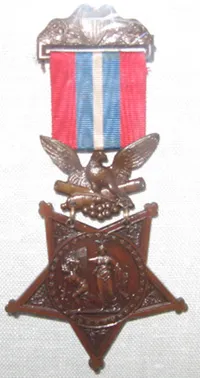
Patterson Receives His Medal of Honor 33 Years Later
While stationed at Fort Crook, Nebraska, Patterson’s daughter, Elizabeth, describes the scene when Patterson received a letter from Secretary of War R.A. Alger notifying him that he had been awarded the Medal of Honor:
I remember the day my father’s medal came. We were sitting around the dining table at our noon meal. It was the great day of the week, the day of the Eastern mail. My father came in to the table with a letter in his hand: a long envelope with black printing in the corner. I was looking at him as he opened it. His face went very red, then drained slowly white. He looked up; something seemed the matter with his throat - he could not speak. Then he reached over our heads and handed the letter to our grandmother. She read it, and her first look was for us. I remember her voice.
“Children,” she said, “your father has been awarded the Medal of Honor by the Congress of the United States.” Her manner was formal and unfamiliar. My father recovered himself.”
It is difficult to determine why so many men received the Medal of Honor roughly 30 years after the fighting ended. It might have been that, as they grew older, some felt they wanted some physical evidence of their participation in the war to pass on to their children and grandchildren. It might have been that as some of the men became aware that their comrades were being recognized with the country’s most prestigious medal, even though somewhat belatedly, they felt that they also should be recognized in the same way.
To learn more about John Patterson, his pursuit of the Medal of Honor, and his post-war career which spanned into the Spanish-American War please download Josef Rokus' full document.
Related Battles
17,000
13,000
